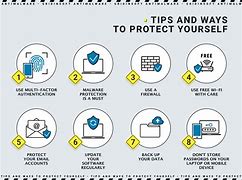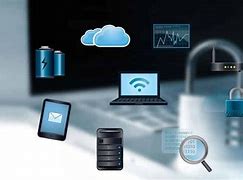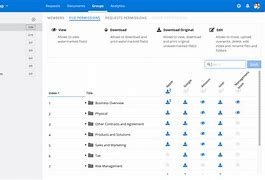

In today’s digital age, where data breaches are becoming increasingly common, safeguarding sensitive information is paramount for businesses of all sizes. Virtual Data Rooms (VDRs) have emerged as a crucial solution to this growing concern, offering a secure and controlled environment for storing, managing, and sharing confidential documents. With their robust security features and comprehensive functionalities, VDRs provide a reliable and efficient way to protect your most valuable assets. This article delves into the top 10 ways virtual data rooms contribute to protecting sensitive information, ensuring data integrity and compliance with industry regulations.
From safeguarding intellectual property during mergers and acquisitions to facilitating due diligence processes in financial transactions, VDRs are essential for organizations seeking to minimize risk and maintain data confidentiality. By understanding the various security mechanisms employed by these platforms, you can leverage the benefits of virtual data rooms to safeguard your sensitive information, maintain compliance with industry standards, and build trust with your stakeholders.
Let’s delve into the specific features and functionalities that empower VDRs to serve as the ultimate shield for your sensitive information.
10 Ways Virtual Data Rooms Protect Sensitive Information
In today’s digital landscape, safeguarding sensitive information is paramount. From financial records to intellectual property, organizations rely on secure solutions to protect their most valuable assets. Virtual data rooms (VDRs) have emerged as a powerful tool for managing and protecting sensitive information, offering a robust and secure environment for collaboration and data sharing.
What is a Virtual Data Room?
A virtual data room (VDR) is a secure, cloud-based platform designed to store, manage, and share sensitive documents and data. It offers a centralized repository for various types of information, offering granular control over access, activity tracking, and security attributes.
Why is Data Security crucial?
Data security is crucial for several reasons:
- Protecting Reputation and Trust: Data breaches can damage an organization’s reputation and erode trust among clients, partners, and investors.
- Compliance with Regulations: Many industries are subject to strict regulations regarding data privacy and security, such as HIPAA for healthcare or GDPR for the European Union.
- Safeguarding Intellectual Property: Sensitive information like trade secrets, patents, and study data needs to be protected from unauthorized access or disclosure.
- Preventing Financial Loss: Data breaches can lead to financial losses due to stolen funds, fraud, or legal expenses.
What are the Risks of Not Securing Data?
Failing to secure data can lead to:
- Data Breaches: Unauthorized access to confidential information can compromise sensitive data.
- Financial Loss: Stolen data can be used for fraudulent activities, outcomeing in financial losses.
- Legal Action: Organizations may face legal action for data breaches, leading to significant penalties and reputational damage.
- Loss of rival benefit: Exposure of confidential information can give competitors an benefit, impacting business strategies and industry share.
How can a Virtual Data Room Protect My Data?
VDRs offer a thorough approach to data security through a combination of attributes and functionalities:
10 Ways Virtual Data Rooms Protect Sensitive Information
1. Access Control and User Management
- What are the varied levels of access? VDRs allow for granular control over user access, enabling administrators to define specific permissions for each user. For example, some users may have full access to all documents, while others may only be granted read-only access to specific files.
- How can I control user access? VDRs offer tools for setting user functions, granting permissions based on specific functions, and monitoring user activity. This ensures that only authorized individuals can access sensitive data.
2. Encryption and Secure Transmission
- What is encryption? Encryption is a process that transforms data into an unreadable format, making it incomprehensible to unauthorized individuals.
- How does encryption protect my data? VDRs utilize strong encryption algorithms to protect data both during transmission and storage. This ensures that even if data is intercepted, it remains inaccessible without the appropriate decryption keys.
3. Audit Trails and Logging
- What is an audit trail? An audit trail records all actions performed within the VDR, providing a thorough history of user activity.
- How can I track activity in the virtual data room? VDRs offer detailed audit trails that track user logins, document access, downloads, and any other pertinent actions. This information is invaluable for determineing suspicious activity and ensuring accountability.
4. Watermarking and Document Control
- What is watermarking? Watermarking embeds a unique identifier into documents, making it difficult to remove and providing proof of origin.
- How can I prevent unauthorized use of documents? VDRs often include watermarking capabilities to prevent unauthorized copying, distribution, or modification of documents. This helps to protect intellectual property and track document application.
5. Two-Factor Authentication
- What is two-factor authentication? Two-factor authentication (2FA) requires users to offer two forms of identification before accessing the VDR, typically a password and a unique code sent to their mobile device.
- How can I add extra security to my account? 2FA adds an extra layer of security to user accounts, making it significantly more difficult for unauthorized individuals to gain access, even if they know the password.
6. Secure Storage and Data Backup
- How can I be sure my data is safe? VDRs utilize geographically dispersed data centers and redundant backups to ensure that data is always available and secure.
- What happens if my data is lost or deleted? VDRs offer data recovery mechanisms and disaster recovery plans to ensure that data is protected against accidental loss or deletion.
7. Compliance and Regulations
- What are the varied compliance standards? varied industries have specific regulations regarding data privacy and security. VDRs often comply with various standards, such as HIPAA, GDPR, and SOC 2, ensuring that organizations meet regulatory requirements.
- How can a virtual data room help me meet regulations? VDRs offer attributes that aid in compliance efforts, such as access control mechanisms, audit trails, and data encryption, to help organizations adhere to regulatory standards.
8. Secure Collaboration and Sharing
- How can I share documents securely? VDRs facilitate secure document sharing, allowing users to share files with specific individuals or groups while maintaining control over access and activity.
- How can I collaborate on documents with others? VDRs offer collaboration tools that enable users to work on documents together, track changes, and ensure that everyone is working with the latest version.
9. Regular Security Updates and Patches
- How can I make sure my virtual data room is secure? VDR offerrs continuously update their platforms with security patches and updates to address vulnerabilities and protect against emerging threats.
- What are the varied security attributes? VDRs offer various security attributes, including firewalls, intrusion detection systems, and anti-malware protection to safeguard against malicious attacks.
10. Secure Document Versioning and Control
- How can I make sure I am working with the latest document version? VDRs offer version control systems that track all changes made to documents, allowing users to view previous versions and ensure they are working with the most up-to-date information.
- How can I prevent unauthorized changes to documents? VDRs offer attributes like document locking and approval workflows to restrict unauthorized changes to documents, maintaining data integrity.
Choosing the Right Virtual Data Room
- What are the varied attributes of virtual data rooms? VDRs come with varying attributes and functionalities. It is essential to select a platform that meets your specific needs and security requirements.
- How can I select the right virtual data room for my needs? Consider factors like the level of security, compliance certifications, user interface, ease of use, and pricing when selecting a VDR.
Conclusion
Virtual data rooms are an essential tool for organizations seeking to protect sensitive information in today’s digital environment. By offering robust security attributes, access controls, and compliance capabilities, VDRs offer a safe and secure environment for managing, sharing, and collaborating on confidential data. Choosing the right VDR based on your specific needs and requirements is crucial for safeguarding your organization’s valuable assets.








